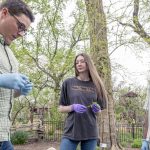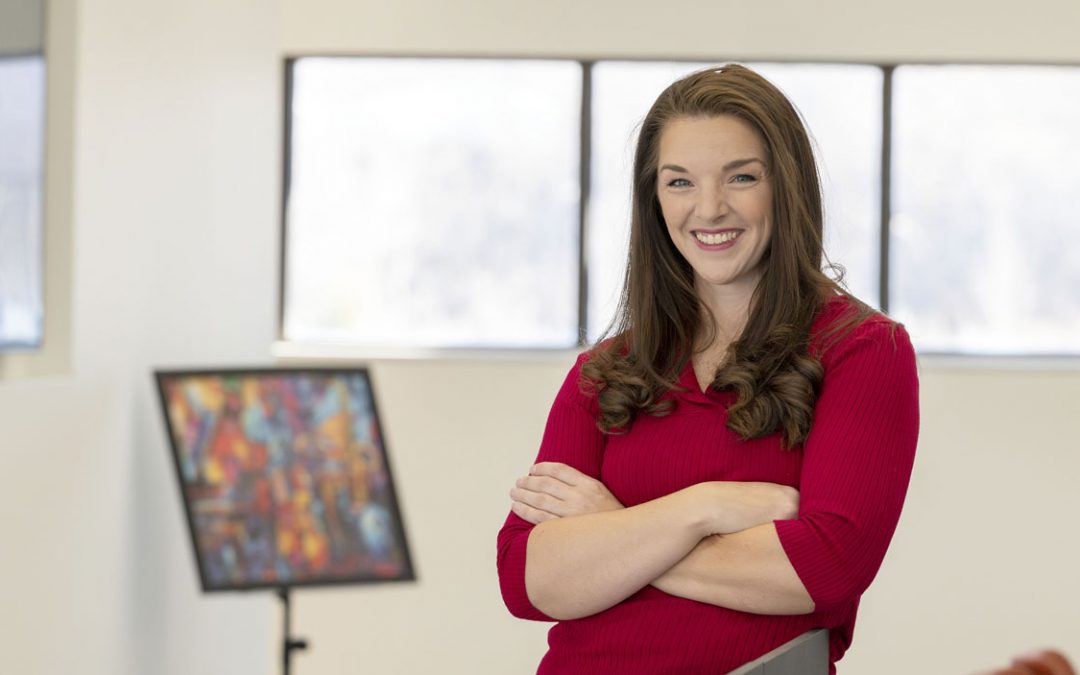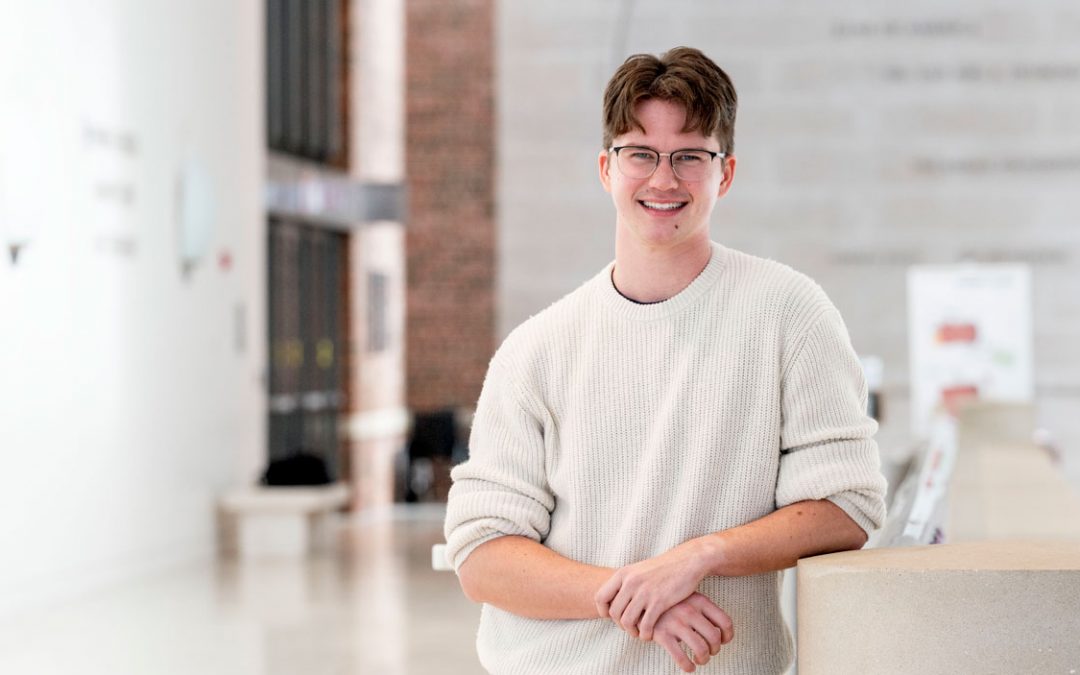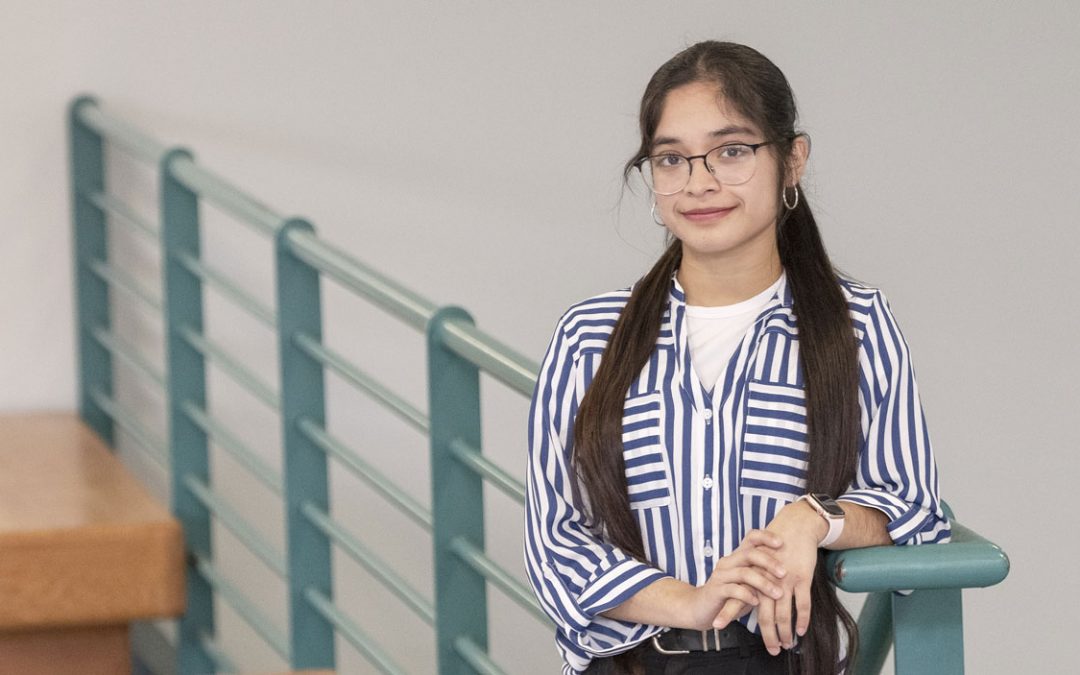
State Historical Society of Missouri St. Louis Research Center Coordinator A.J. Medlock (at right) shows archivists Mike McHugh and Zack Palitzsch a book containing Fontbonne University’s student roster from 1924-1928. It is one piece of the Fontbonne University archives, which the university gave to SHSMO after announcing its impending closure last year. Much of the collection will be stored in the St. Louis Research Center inside the Thomas Jefferson Library on UMSL’s campus. (Photos by Derik Holtmann)
Fontbonne University held its final commencement ceremony last Friday before officially closing its doors after more than a century of educating students on its campus in Clayton, Missouri.
But the history of the Catholic university, founded by the Sisters of St. Joseph of Carondelet in 1923, will live on at the State Historical Society of Missouri, with many of its archives held in SHSMO’s St. Louis Research Center on the second floor of the Thomas Jefferson Library at the University of Missouri–St. Louis.
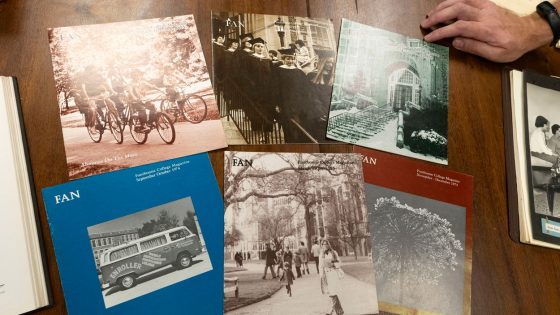
The Fontbonne University archives given to the State Historical Society of Missouri include issues of Fan, the university’s magazine.
“It’s a pretty large collection,” said A.J. Medlock, the center’s coordinator. “It dates back to about 1917. We’ve got stuff like their early charter incorporation materials, their meeting minutes of the board of directors, tons of photographs from 1923, when the school officially opened, all the way through the 2000s. A lot of manuals and handbooks from the college back in the day. Of course, there are yearbooks, student newspapers.”
The items showcase historical changes not only at the university but more broadly in St. Louis or even nationally.
“I think it provides a good look at Catholic higher education or higher education in general in Missouri and in the United States,” Medlock said. “It used to be an all-women’s school, so you can trace when that finally ended and became open to males. If you’re studying the history of pedagogy and how research into the humanities changed over time, I think Fontbonne’s a great asset for that.
“Also, just on a basic level, if you’re a genealogist or wanting to learn more about where Mom or Grandma or Grandpa went to college, the photographs, the yearbooks provide really great documentation of student life and how student life has changed over time.”
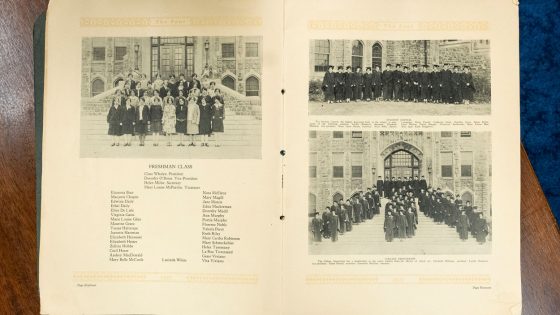
A 1927 edition of The Font yearbook from Fontbonne University includes a picture of the freshman class at the then-all-women college.
Fontbonne announced its plans to close in March 2024, citing years of declining enrollments and a shrinking endowment that left it in a financial position that was no longer sustainable.
Last September, Medlock met with Fontbonne’s head librarian Rebecca van Kniest, who was looking for a place that could preserve the university’s archives. He introduced her to SHSMO’s history, from its founding in May 1898 by the Missouri Press Association, as well as its mission to “collect, preserve, publish, exhibit and make available material related to all aspects and periods of Missouri history.”
Medlock convinced van Kniest that SHSMO would be the right fit, and the Fontbonne board ultimately agreed, voting to pass the materials – some 150 cubic feet worth – on to the historical society last fall. Medlock began transferring the collection, a few boxes at a time, last January and picked up the final box last month.
Thanks to van Kniest and her team, the archives were well-organized when they arrived, meaning Medlock has had less work than he otherwise might have to get them ready for public viewing.
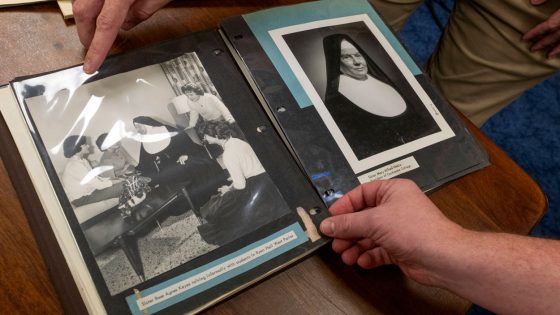
Fontbonne University’s archives included a large number of photos from throughout the university’s more than 100-year history.
Some of the materials will be housed on shelves in the research center’s storage room, amid collections that include a visual history of the construction of the Gateway Arch, the St. Louis Metropolitan League of Women Voters Records, and the personal papers of former Saint Louis Zoo Director Marlin Perkins, best known for his role as the television host of Mutual of Omaha’s Wild Kingdom.
Because of space limitations, the rest will have to be kept at SHSMO’s records center in Columbia. Medlock is only able to keep about 14% of the research center’s 9,000 cubic feet of materials on-site at a time.
SHSMO also has research centers located on university campuses in Cape Girardeau, Columbia, Kansas City, Rolla and Springfield and is headquartered at the Center for Missouri Studies in downtown Columbia.
Members of the public may request access to any pieces from the St. Louis Research Center’s collections as well as from collections housed at other research centers around the state, and the staff will make arrangements to have them available for viewing at prescheduled appointments. Transfers from one research center to another can typically be made within one to three weeks.
“Our biggest clientele are students,” said Medlock, who has gladly engaged with first-year writing classes at UMSL for several years, helping them learn library skills and exposing them to historical examples of persuasive writing.
He is eager to assist any students who visit the St. Louis Research Center office to look for materials for their projects.
“In terms of research, there is all sorts of interesting stuff,” Medlock said. “It really enhances your projects and also shows a professor that you’re willing to go the extra mile. Obviously, the Internet has tons of good information, but not everything’s online.
“There’s always someone at this reference desk willing to help you, bounce off ideas with you. Maybe there’s a collection we can recommend. We’re going to be very nice to anyone who comes in and wants to look at this stuff.”








